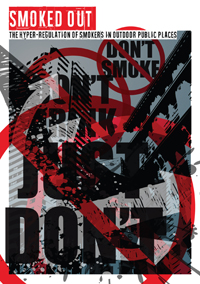From Apricot to Apple
 Saturday, January 27, 2024 at 15:20
Saturday, January 27, 2024 at 15:20 It’s 40 years since Apple’s famous ‘1984’ TV advertisement was broadcast at half-time during Super Bowl XVIII.
Directed by Ridley Scott, the one-minute ad was shown just once at a cost, I believe, of $300,000, although production costs took that sum nearer to a million dollars.
Small change to the company now, but in 1984 Apple was not the giant corporation we know today.
In the world of computers, that mantle was held by IBM which most businesses considered to be the ‘safe’, albeit conservative, choice.
'Nobody gets fired for buying IBM' was a familiar phrase at the time. Apple, in contrast, was largely unknown.
I can’t remember if the ‘1984’ ad was shown in the UK, but I think not. I do however remember watching Super Bowl XVIII because my old friend Brian Monteith organised a party at his flat in London.
I should explain that, following the launch of Channel 4 in 1982, Super Bowl parties were fashionable for a year or two among young twentysomethings in the UK thanks to Channel 4’s coverage of the NFL.
At that time, before I switched my allegiance to the Buffalo Bills a decade later, I 'supported' Washington Redskins because Washington was the only US city I had visited, and by coincidence the Redskins were in Super Bowl XVIII.
On Sunday January 22, 1984, I was keen therefore to watch the game, and I thought others would be too.
Instead I remember being slightly irritated that most of the party goers had little interest in the game and talked throughout, wandering from room to room, largely ignoring what was happening on the small screen in a corner of the living room.
As I say, I don’t remember Apple’s iconic ad being broadcast at half-time in the UK, but I saw a clip not long after and it’s hard to describe to a modern day audience the impact it had.
To put it in perspective, the Soviet Union - the epitome of an authoritarian, Big Brother society - was still perceived as a threat to the West.
In truth, however, the ad was directed not at the USSR but at IBM, the enormous behemoth that seemed to have a stranglehold on the computer market in the US and abroad.
Apple, the ad implied, could set you free from its giant competitor.
As it happens, I couldn't afford the new Apple MacIntosh 128k so my first PC, which I bought in 1985, was an Apricot xi.
Apricot was a British company founded, I think, in 1965. In the Eighties it trailed far behind IBM but I didn’t want an IBM PC, partly for the reasons hinted at by Ridley Scott’s advertisement.
Also, a friend of mine, whose father worked for the company, had a portable IBM PC and it was an ugly thing that looked more like a suitcase with a tiny screen and weighed a ton.
It was desperately clunky and used 5 inch floppy disks that were called floppy for a reason.
In comparison, the Apricot xi – which used the smaller, and rigid, 3.5 inch disks – looked quite nice. It also had a 12 inch monitor (the Macintosh screen was only nine inches).
Like the IBM, however, the Apricot xi still had a text-based user interface (ie no graphics). That didn't bother me, however, because in 1985 I was still using an electric 'golfball' typewriter so any computer was an upgrade on that.
Older, manual typewriters featured type bars that swung up and hit the ribbon. With a 'golfball' or 'type ball' machine, the 'ball' would spin round and hit the ribbon with the appropriate character.
To use a different font, you simply changed the ‘ball’, something you couldn’t do on older typewriters.
Electric typewriters had been around for a while (IBM launched its Selectric range in 1961), but it was 1978 before I used one, and comparing it to the old Remington portable I had used previously was like night and day.
Ironically, within a few years it too was rendered obsolete ... by the personal computer.
In 1990, five years after buying my Apricot xi, on which I typed all my media monitoring reports, I finally got my hands on an Apple Macintosh when I joined a small company publishing magazines.
Before then I had produced magazines by sending typed copy to the printers, who would send it back, typeset in neat columns that I would cut and paste on to thin cardboard grids that were then returned to the printers, who would scan and add any photographs or illustrations.
With its graphical user interface (GUI) the Apple Macintosh was a revelation because you could by-pass not only the typesetter but even the traditional graphic designer, many of whom were struggling to make the switch from drawing board to computer.
Sadly for them, many were replaced by young IT specialists who understood the hardware and the software even if they lacked the design skills of the designers they replaced.
The Mac, which has always been incredibly intuitive, made things even easier, especially for people like me.
In hindsight, the mono screen on the Macintosh Classic I worked on was absurdly small for designing magazines, so I'm wondering if our designer didn't use the (older) Macintosh II that had a larger monitor and was the first Mac to have a colour screen.
I definitely had the Classic, though, but the GUI was such a leap forward compared to what I was used to the size of the screen didn’t seem to matter.
In fact, computing became fun because the Macintosh was more than just a glorified typewriter. Strange as it may sound, it had a personality that was demonstrated as soon as you switched it on and the word 'Hello' appeared on the screen. (I never grew tired of that.)
Despite this, Apple struggled for much of the Nineties and it took the return of co-founder Steve Jobs, and the launch of the iconic coloured iMac in 1998, to revive its fortunes and set the company apart from most of its rivals.
In those days Forest's corporate colour was orange and it would have been fun to equip the office with orange iMacs. Unfortunately I inherited an office full of Windows PCs and it was too expensive to switch and start afresh.
Personally, however, I couldn't manage without an Apple computer and my ownership record – from Power Mac to Power Mac G3 and Power Mac G4, followed by various MacBooks and iMacs – now goes back 30 years.
As for Apricot, the company was sold to Mitsubishi Electric Corporation in the early Nineties and the brand gradually disappeared, gone but not forgotten by those who began our computing journey by patriotically buying British.
 Simon Clark |
Simon Clark |  1 Comment |
1 Comment | 










Reader Comments (1)
For one moment there, I thought you were talking about the vape flavour ban ;)